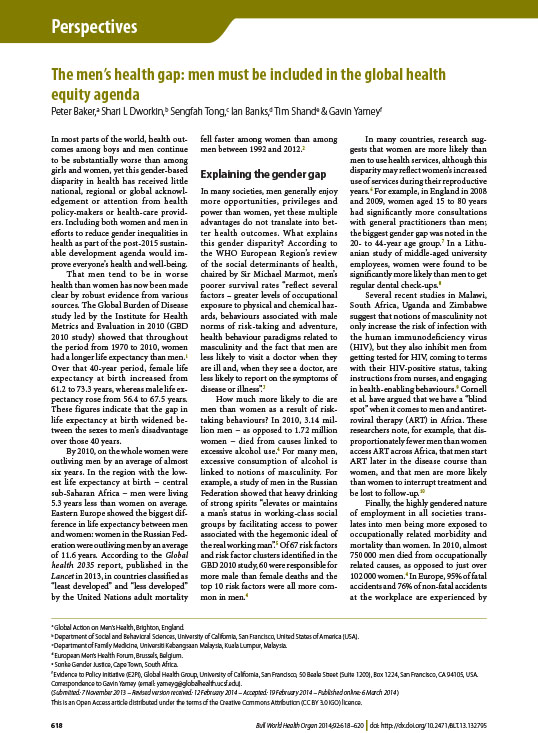In most parts of the world, health outcomes among boys and men continue to be substantially worse than among girls and women, yet this gender-based disparity in health has received little national, regional or global acknowledgement or attention from health policy-makers or health-care providers. Including both women and men in efforts to reduce gender inequalities in health as part of the post-2015 sustainable development agenda would improve everyone’s health and well-being.
That men tend to be in worse health than women has now been made clear by robust evidence from various sources. The Global Burden of Disease study led by the Institute for Health Metrics and Evaluation in 2010 (GBD 2010 study) showed that throughout the period from 1970 to 2010, women had a longer life expectancy than men. Over that 40-year period, female life expectancy at birth increased from 61.2 to 73.3 years, whereas male life expectancy rose from 56.4 to 67.5 years. These figures indicate that the gap in life expectancy at birth widened between the sexes to men’s disadvantage over those 40 years.
By 2010, on the whole women were outliving men by an average of almost six years. In the region with the lowest life expectancy at birth − central sub-Saharan Africa − men were living 5.3 years less than women on average. Eastern Europe showed the biggest difference in life expectancy between men and women: women in the Russian Federation were outliving men by an average of 11.6 years. According to the Global health 2035 report, published in the Lancet in 2013, in countries classified as “least developed” and “less developed” by the United Nations adult mortality fell faster among women than among men between 1992 and 2012.
